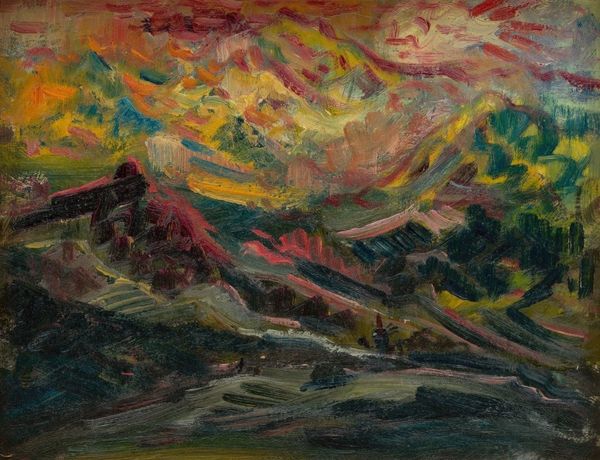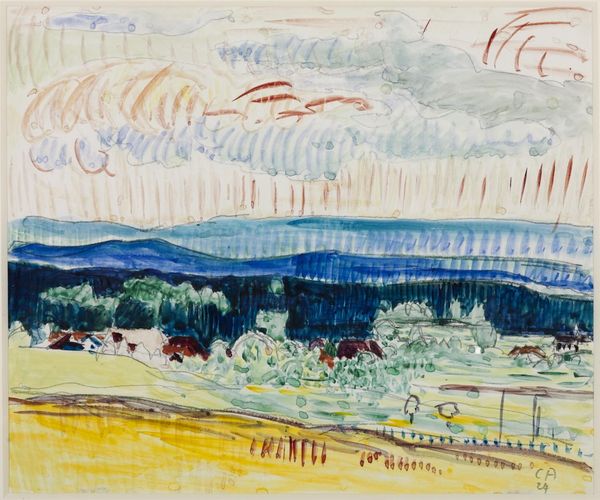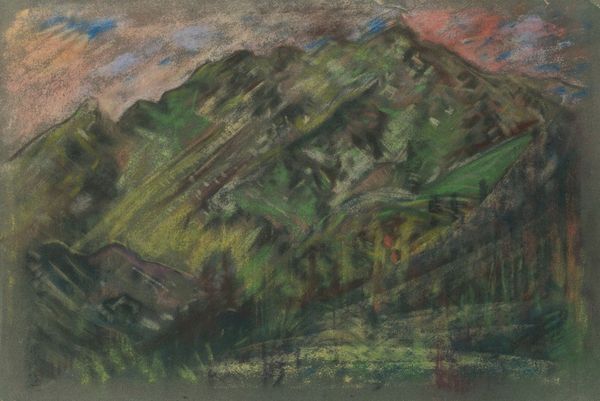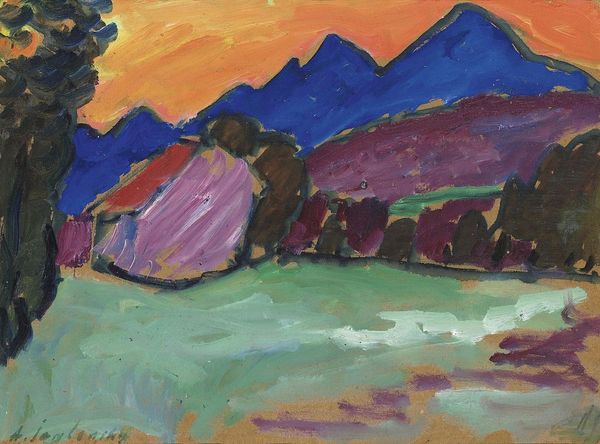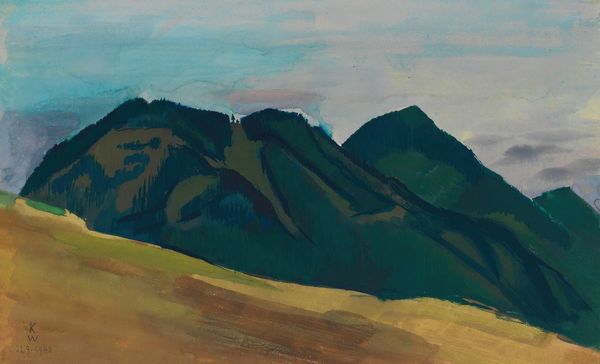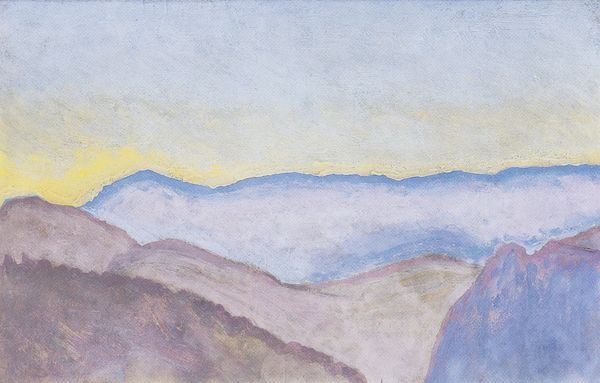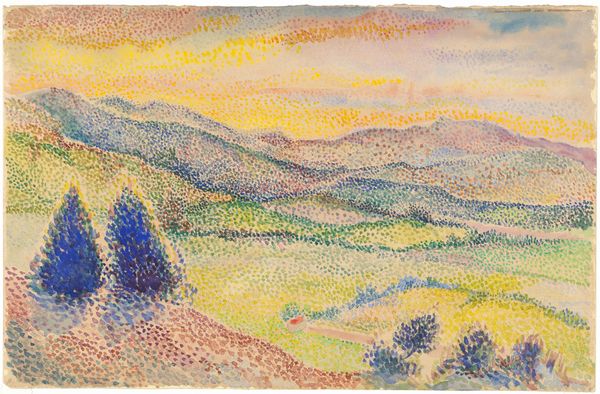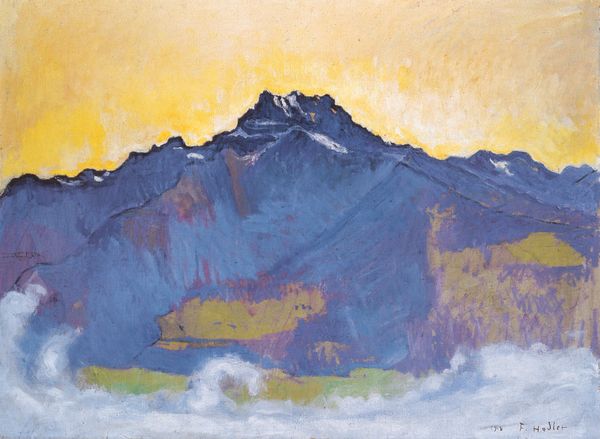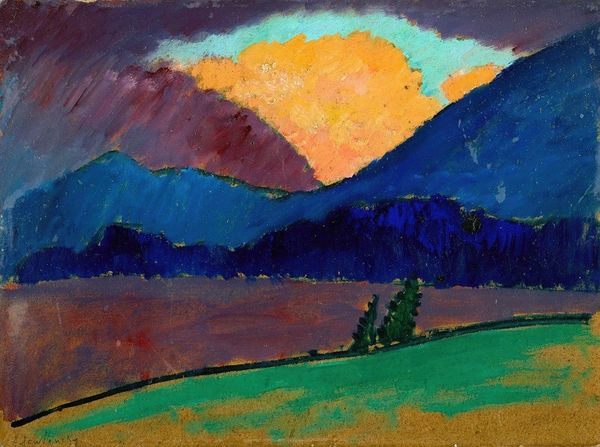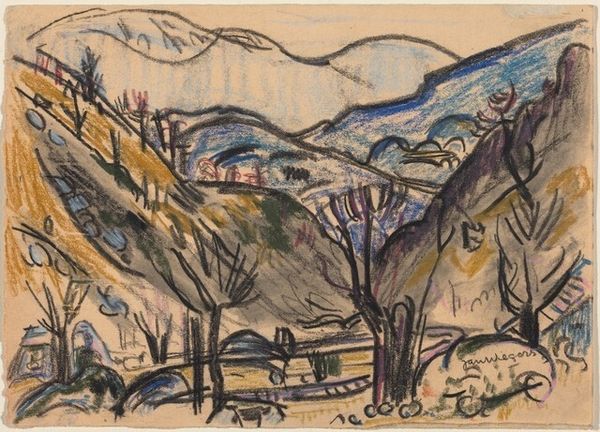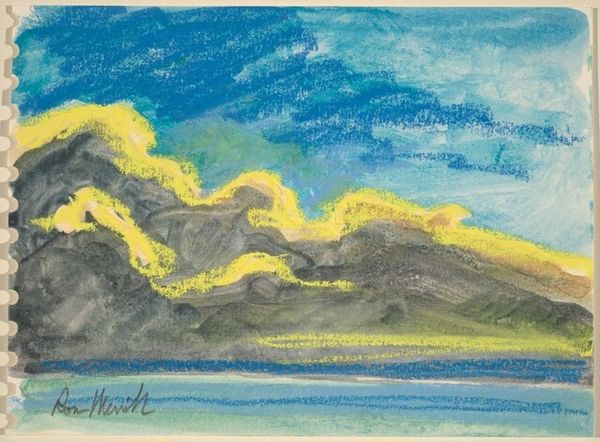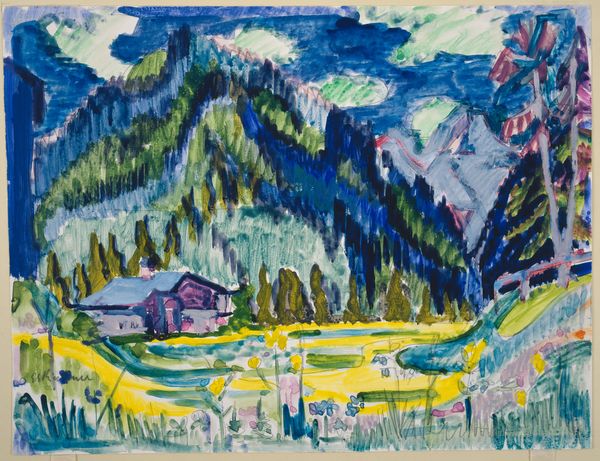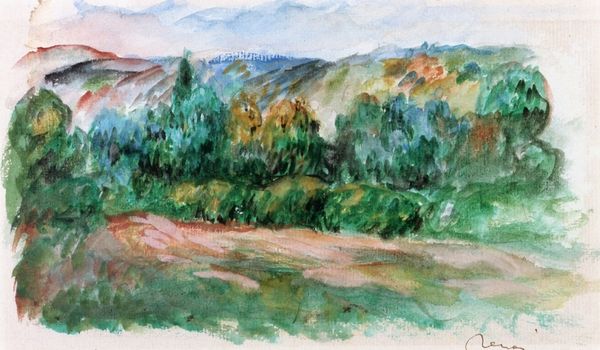
Copyright: Public Domain: Artvee
Curator: Welcome. We're looking at Charles Demuth's "Early Landscape" from 1914. Editor: There's a fragile beauty to it. The thin washes of watercolor and faint pencil lines… it feels very preliminary, a quick sketch. Curator: It's a window into Demuth’s evolving visual language. This piece predates his more architectural and industrial works; here, the landscape is soft, almost hesitant. Consider the context—European art was grappling with Cubism, and that energy found its way across the Atlantic. Editor: I'm struck by the raw, unblended colors. The strokes look spontaneous and direct—less about representing form and more about applying pigment to paper. Curator: Demuth belonged to a circle interested in fracturing conventional perspectives. "Early Landscape," while appearing tame, is part of a broader cultural moment challenging representational norms in painting. The Stieglitz circle championed experimentation and bringing European Modernism to the United States. Editor: And the materiality, this reliance on watercolor… it democratizes the artistic process, right? Watercolor was commercially available, affordable, no longer the exclusive domain of academies. How accessible did that make creating art? Curator: That is important! Watercolors became incredibly popular for amateur artists as they became more available commercially, and venues to exhibit their works slowly increased. They gave access to many more folks. It's interesting to consider who felt invited to express their perspectives through landscape. Editor: This piece feels connected to the tradition of landscape painting but resists the urge to idealize it. There’s a lack of polish, making the natural scene feel immediate and lived-in. It's a raw record, really. Curator: Exactly, and the institutional acceptance of these new materials changed the hierarchy of artmaking and its exhibition spaces in general. These were crucial shifts. Editor: So, despite its seeming simplicity, it represents a complicated nexus of accessibility and technique. Thanks for bringing that to light. Curator: It’s amazing how much even seemingly minor works like these can reveal. Thank you for sharing your perspectives.
Comments
No comments
Be the first to comment and join the conversation on the ultimate creative platform.
